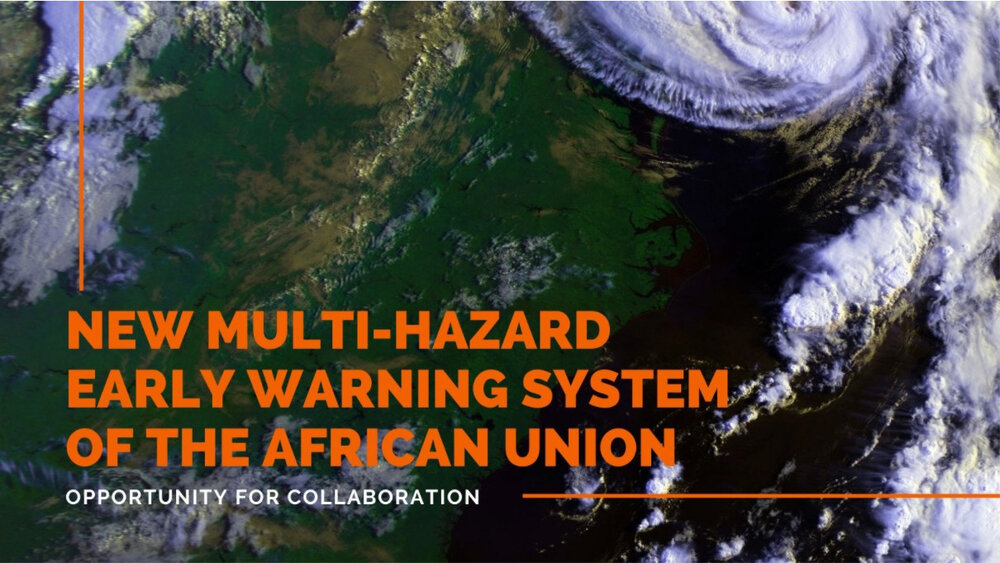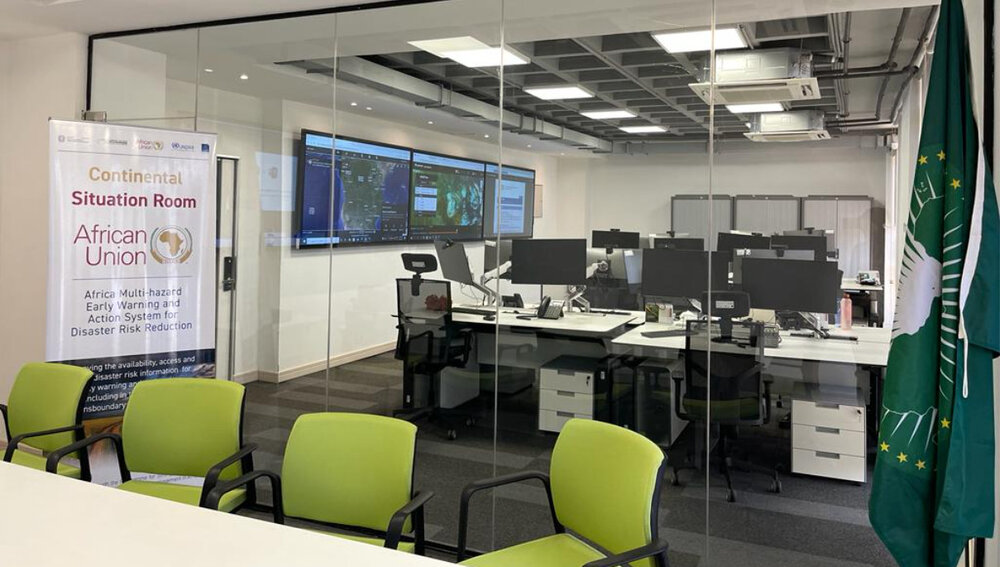Opportunities for GEO to contribute to a new Multi-Hazard Early Warning System of the African Union Commission

On this year’s World Meteorological Day with its focus on Early Warning and Early Action, United Nations Secretary-General, António Guterres launched a new initiative. Within the next five years, early warning systems will protect everyone on Earth from extreme weather and climate change. Earth observation (EO) tools and services play a critical role in contributing to this initiative, including the development of effective Multi-Hazard Early Warning Systems (MHEWS). All over the world, countries are feeling the impact of the increasing frequency and magnitude of climate exacerbated disasters. In addition, these multi-hazard disasters are occurring almost simultaneously with little or no time and resources to prepare for or recover from them. The United Nations Office for Disasters (UNDRR) has repeatedly emphasised on the need to address these integrated, systemic risks. For the African continent in particular, the impact has been significant due to how exposed and vulnerable people and assets are to hazardous situations. The African Union Commission (AUC) has therefore set a goal to establish an effective MHEWS to provide early warning information and coordination support to its member states in preparing for, responding to and recovering from disasters.
On 28th February, the AUC achieved a major milestone towards achieving an effective MHEWS on the continent when theAfrica Multi-hazard Early Warning and Early Action Systems (AMHEWAS) Situation Room for Disaster Risk Reduction (DRR)was officially handed over to the Commission by the Government of Italy at the AUC premises in Addis Ababa. The AMHEWAS Situation Room is linked to two regional Situation Rooms:
- The Disaster Operations Centre (DOC) Situation Room located at the Intergovernmental Authority on Development/Climate Prediction and Applications Centre (IGAD/ICPAC) in Ngong, Kenya; and
- The multi-advisory Situation Room located in Niamey, Niger, at the African Centre of Meteorological Applications for Development (ACMAD).
This forms part of achieving Africa’s strategic plan called the [Programme of Action for the Implementation of the Sendai Framework for Disaster Risk Reduction (SFDRR) in Africa](https://www.undrr.org/publication/programme-action-implementation-sendai-framework-disaster-risk-reduction-2015-2030#:~:text=The%20Programme%20of%20Action(PoA,quickly%20come%20back%20to%20normalcy) to substantially increase the availability of and access to multi-hazard early warning systems and disaster risk information and assessments to people by 2030.
The AMHEWAS Situation room is fully equipped with state-of-the-art Information and Communications Technologies (ICTs), including giant computer screens, the latest computer models and communication gadgets, to produce actional early warning information and provide coordination support to AU departments, Regional Economic Communities (RECs) and their member states. The AMHEWAS Situation Room uses the myDewetra platform, an online hub of geospatial platforms, to provide EO-based real-time forecasting and monitoring of environmental risks. The observed environmental risks are verified with the institutional spatial system at IGAD/ICPAC and ACMAD before being accumulated or captured in a bi-weekly multi-hazard report, Continental Watch orSituational Report produced on a developing disaster situation. BothContinental Watch andSituational Reports are currently being circulated to AU departments and planned to be extended soon to embassies in Addis Ababa in Ethiopia, RECs, development and humanitarian partners, as well as member states.
Technical advice for the operation of the AMHEWAS Situation Room and the production of the two reports is provided by the Africa Working Group on Disaster Risk Reduction (AWGDRR), a continental advisory group chaired by the AUC, of which UNDRR is the secretariat. The AWGDRR is the main mechanism for coordinating technical support for DRR policy implementation and review on the African continent. For example, the AWGDRR shares perspectives on Standard Operating Procedures (SoPs) in their national Early Warning Systems (EWS) as part of making the AMHEWAS Situation Room interoperable with the national systems. The AWGDRR is composed of representatives from the national disaster management authorities of African Union member states, RECs, international development partners, and other key groups and stakeholders such as youth, academia, and the media.

Figure 1: View of the AMHEWAS situation room showing part of an 8-seater capacity coordination room and working area for 8 duty officers.
The launch of the AMHEWAS Situation Room with links to national systems provides a new opportunity for GEO Work Programme (GWP) activities to provide their existing and new datasets, tools, services and methodologies to be used for Africa. In fact, one of the GWP activities, the Global Flood Awareness Systems (GloFAS), is already being used by the AMHEWAS Situation Room to predict floods. Since, the Continental Watch andSituational Reports intend to increase its coverage of natural hazards/environmental risks and sectoral impact-based forecasting to make them more relevant to member states, the AMHEWAS Situation Room can become a testbed for multiple GWP activities, i.e., GEOGloWS streamflow information and GEOGLAM crop condition and famine monitoring, which can be integrated simultaneously and complement each other to address systemic risks.

Figure 2: The three computer displays in the AMHEWAS Situation room displays the Glofas Platform (total precipitation), EUMETSAT (precipitation rate at ground) and a sample of Continental Watch.
The prospects for the AUC to leverage the findings from the GEO community are good, as there will be a direct link between the AUC and GEO’s DRR Working Group. More specifically, a representative of the AUC will join the new User Co-design Team of the EO Risk Toolkit. The GEO DRR Working Group is developing the EO Risk Toolkit in coordination with UNDRR so that the AUC and others can be regularly informed about use cases of GWP activities.